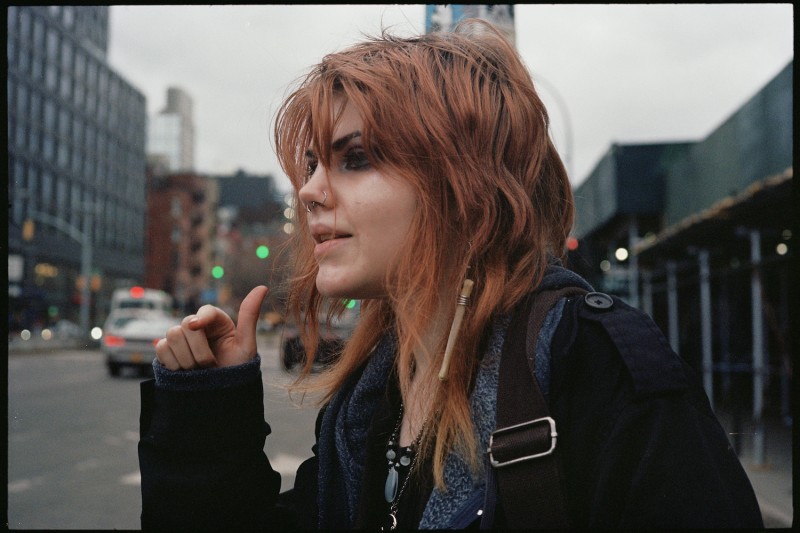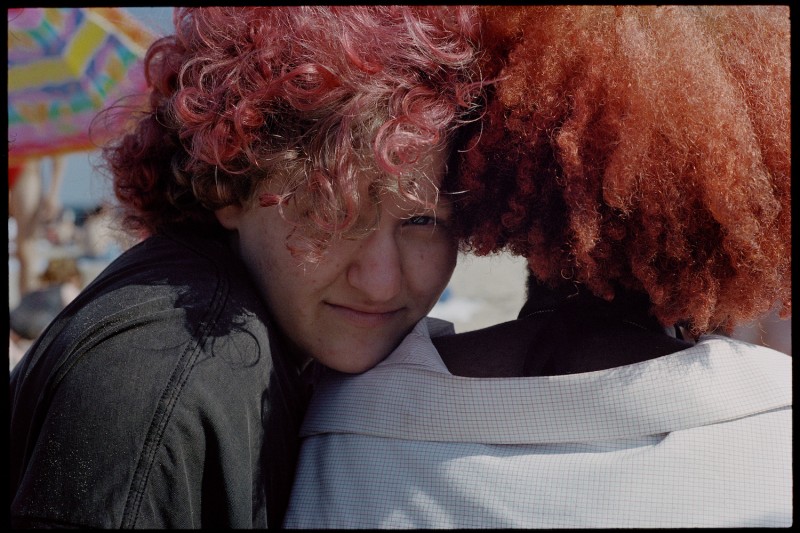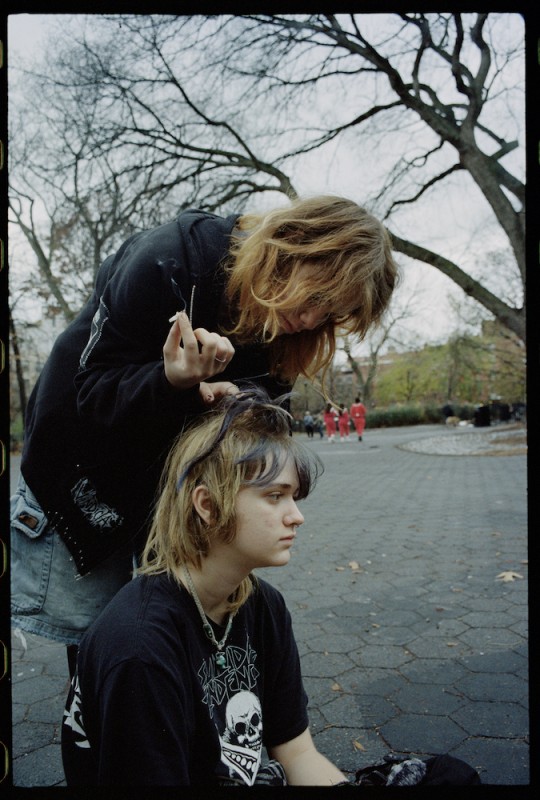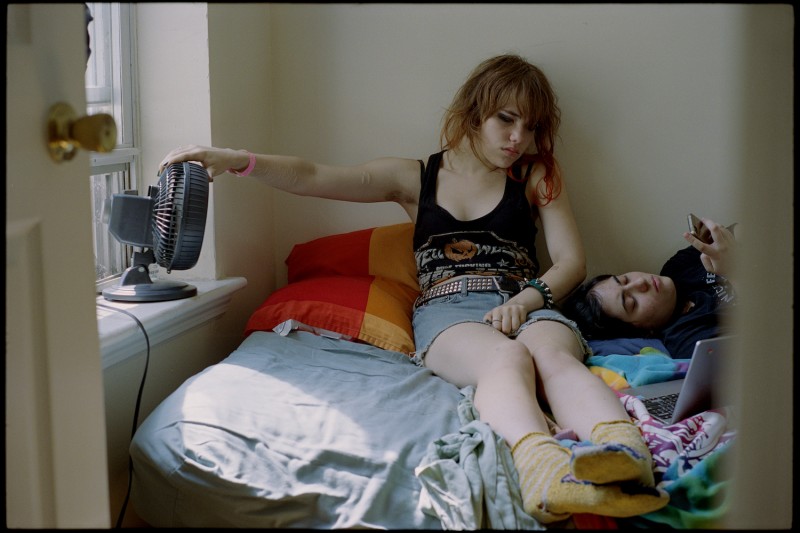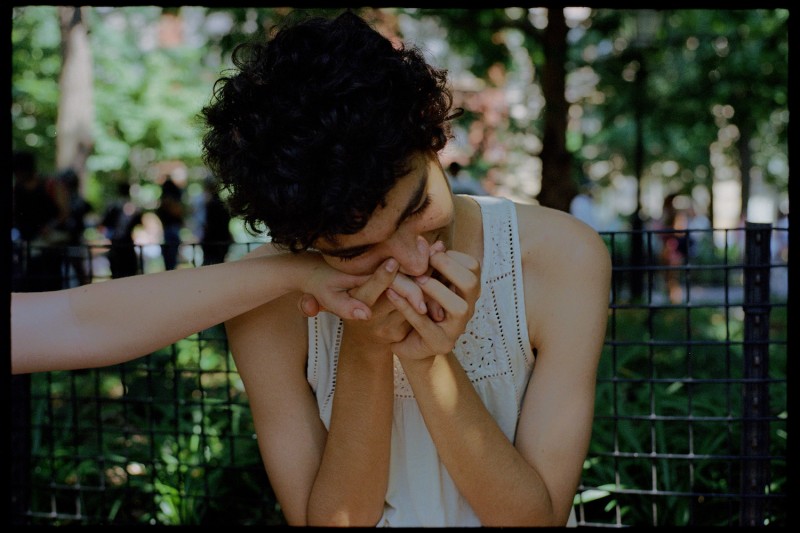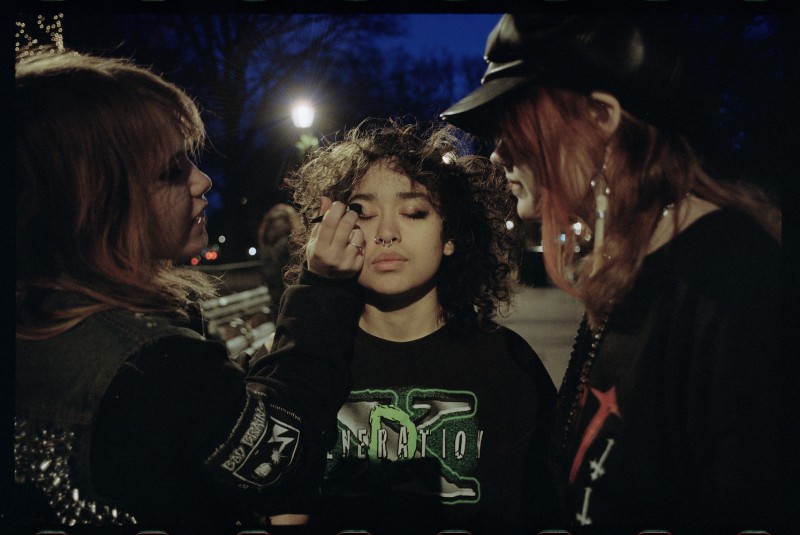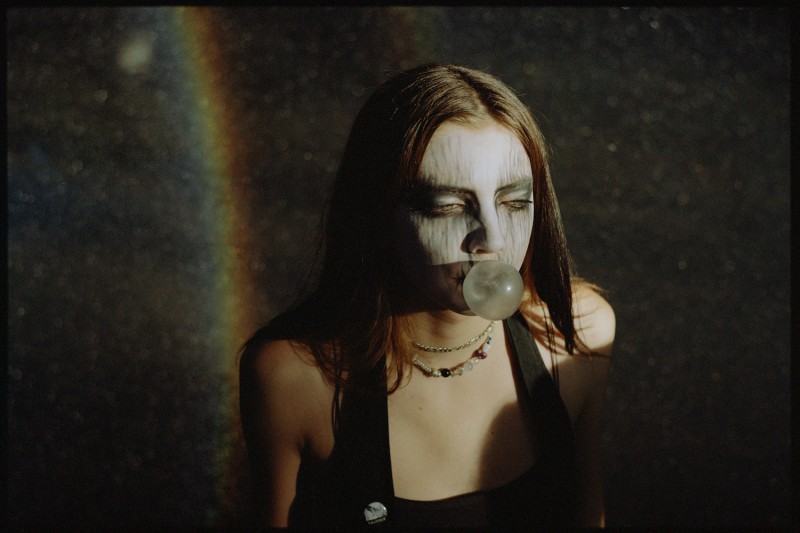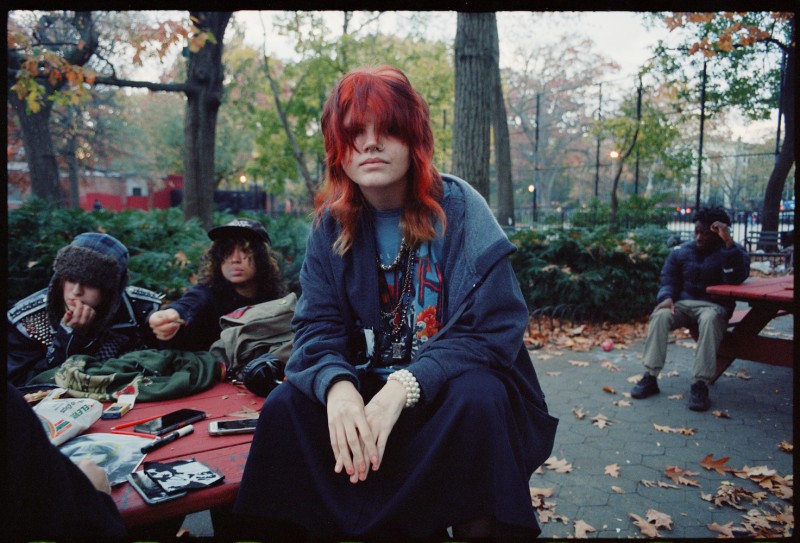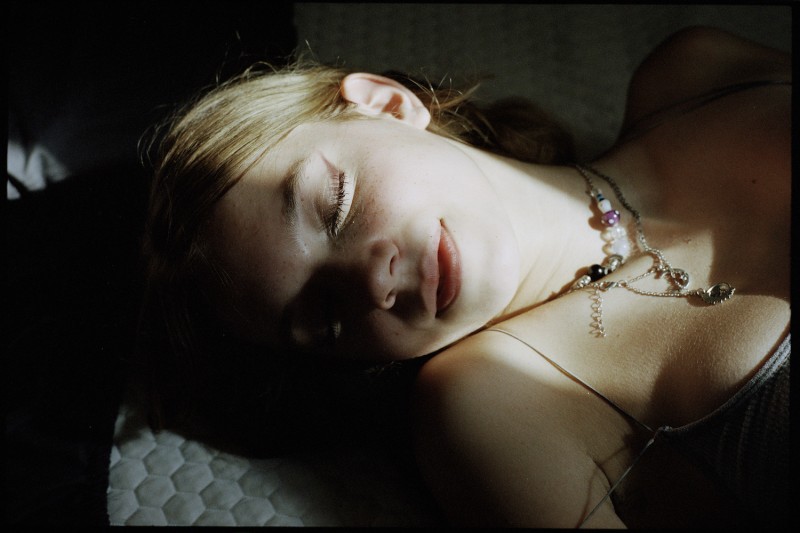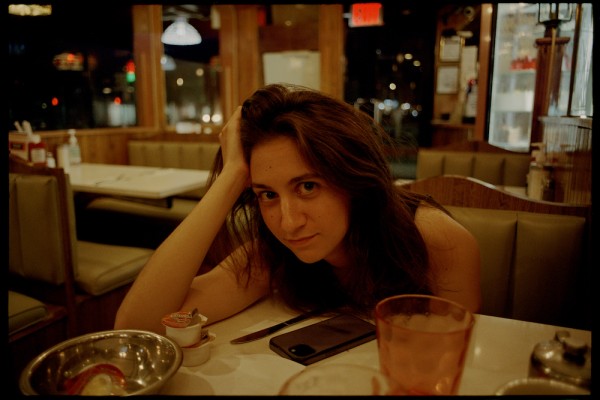Teenagers
Teenagers
Sara Messinger
January 6, 2023
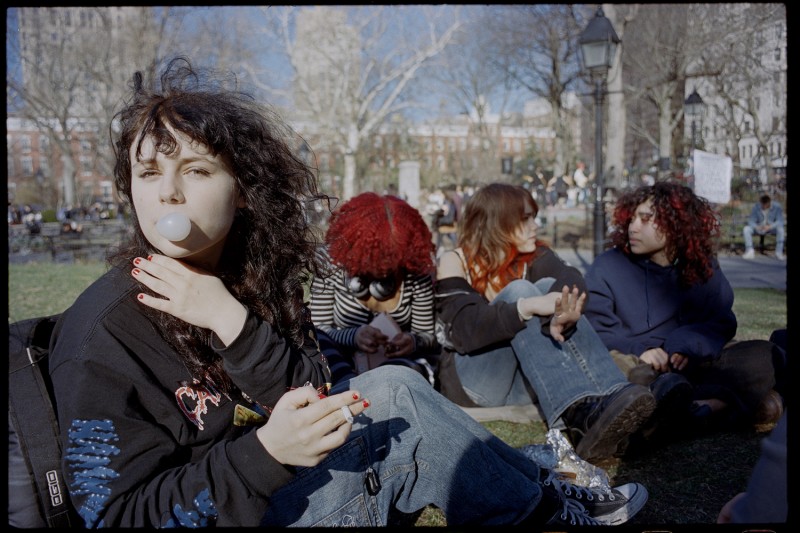
Sara Messinger: It was June 2021, I saw two teens skipping down the path arm and arm, smiling and laughing. With the look of the iconic orange hair and both of their clothes, they looked like they had just walked out of a movie. I asked them if I could take their picture. They were both very excited, and got together for the portrait. “What are your names?” I asked. Polly and Bat. I have since kept running into them in the park with other friends. The group was becoming the heart and soul, the visual landscape of a very famous and historic park in New York City. A few months later, I spotted Polly with Marco on a makeshift swing someone set up on a tree in the grass. I walked up to them and asked to take their portrait again and if they remembered me. I finally asked what they would think of me hanging out, and taking pictures of their daily lives as teenagers growing up in New York City. They accepted me into the group, and I have met up with them ever since that day in early November 2021.
You write that this project is about identity and mental health – could you elaborate on that?
The work is about teenagers – a subject that has been photographed, over and over again. However, every generation has its battles, and for this generation I do believe they struggle with mental health more than any group of adolescents before.
More than anything else, the work explores identity. Generation Z is known to have the most fluid sense of sexual identity and gender. The group of teenagers that I follow are only about seven to eight years younger than me. However, they are the most open and accepting group of teens that I ever met – far more than those I grew up with. They change their pronouns or name at their leisure, and their friends accept with no questioning or gossiping. The work is about a group of teenagers defiantly ignoring all gender norms, to find their own sense of self and identity in this world built on suffocating social constructs and gender rules.
What can we learn from the group?
I believe we can learn so many things from a group of young people. Most importantly, the beauty in the individual. These teenagers celebrate their friends for their unique style and interests. They listen to one another, and celebrate and encourage self-exploration. This group doesn’t care about fitting in. They want you to be the truest version of yourself, and that is beautiful, that is power, that is defiance in a society that is trying to constantly fit you into a box. They are paving a new road, and I can’t wait to see this generation grow and gain greater influence on this world.
Why did you decide to photograph the project in analogue?
A successful photograph for me is fuelled by my past that I can’t forget, or, sometimes, my daydreams that I unapologetically confuse with reality. All I want when making a photograph is for the subconscious of my mind to take over, and capture the moments that reflect my own feelings, that I find difficult to express through frigid and stale words. Analogue photography allows me to enter this state of mind, as I rely on my feelings versus technology. I don’t want to make a perfect picture, I want to make an honest picture. The photographs tell me things about myself. A photograph is proof of what it is that one felt and saw in that moment. I am obsessed and utterly fascinated with this way of seeing. With all of my work, this is my approach.
Sara Messinger+-
Born in a suburb of Philadelphia in 1998, she began studies of photography at the Gallatin School of Individualized Study of the NYU, and completed them with a Bachelors of Arts. Since then she has been working as a documentary photographer on long-term projects, with an emphasis on gender, identity and sub-cultures. In 2021 she was selected by The New York Times magazine to document the “reawakening” of New York City after the tough year of the Covid lockdown. Messinger lives in New York. More

